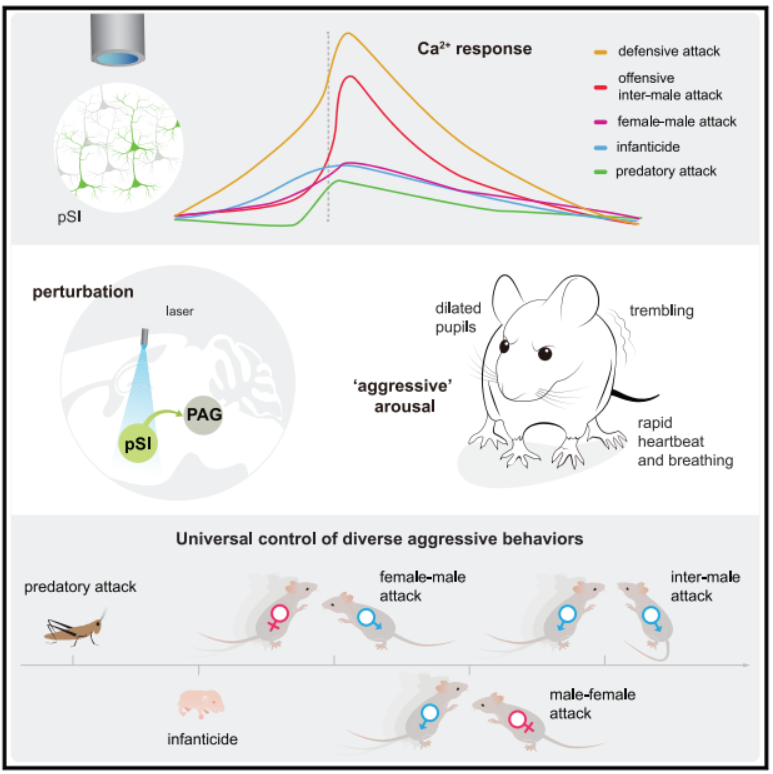AAV1-CMV-Cre and AAV-DIO-mCherry were used to specifically label the connection from the pSI to the VL/LPAG, pseudorabies virus retrograde tracing system was used to retrogradely trace the monosynaptic presynaptic neurons to the pSI-PAG neurons. (From
BrainVTA)
The viruses used in this article from BrainVTA are in the table below
|
CRE Recombinase |
AAV1-CMV-Cre |
|
Control |
AAV2-EF1a-DIO-mCherry |
|
Tracing Helper |
AAV-CAG-DIO-RG
AAV-CAG-DIO-TVA-EGFP
AAV-DIO-G
AAV-DIO-TVA-EGFP |
|
Rabies viruses |
RV-SAD-OG-mCherry (EnvA)
Rabies viruses SAD-OG-mCherry (EnvA) |
Zhenggang Zhu, Qingqing Ma, Lu Miao, Hongbin Yang, Lina Pan, Kaiyuan Li, Ling-Hui Zeng, Xiaoxing Zhang, Jintao Wu, Sijia Hao, Shen Lin, Xiulin Ma, Weihao Mai, Xiang Feng, Yizhe Hao, Li Sun, Shumin Duan, Yan-qin Yu

Although aggressive behaviors are universal and essential for survival, “uncontrollable” and abnormal aggressive behaviors in animals or humans may have severe adverse consequences or social costs. Neural circuits regulating specific forms of aggression under defined conditions have been described, but how brain circuits govern a general aggressive response remains unknown. Here, we found that posterior substantia innominata (pSI) neurons responded to several aggression-provoking cues with the graded activity of differential dynamics, predicting the aggressive state and the topography of aggression in mice. Activation of pSI neurons projecting to the periaqueductal gray (PAG) increased aggressive arousal and robustly initiated/promoted all the types of aggressive behavior examined in an activity-level-dependent manner. Inactivation of the pSI circuit largely blocked diverse aggressive behaviors but not mating. By encoding a general aggressive response, the pSI-PAG circuit universally drives multiple aggressive behaviors and may provide a potential target for alleviating human pathological aggression.
 Figure1. Inputs of pSI-PAG Neurons
Figure1. Inputs of pSI-PAG Neurons
In this study, the authors found that a subset of neurons in a brain area called the posterior substantia innominata promote arousal and universally drive aggressive behaviors in an activity-level-dependent manner in mice.
BrainVTA offers viral vector construction & virus packaging services for AAV, LV, RABV, PRV, HSV and VSV that help researchers explore questions about genes, neurons, circuitry structure, function of brain network, mechanism and treatment of diseases.
If you have any needs, just email us at
sales@brainvta.com.

